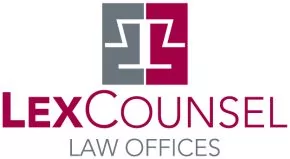- with Finance and Tax Executives
- in United States
- with readers working within the Accounting & Consultancy, Media & Information and Law Firm industries
Department of Industrial Policy and Promotion ("DIPP") recently issued an office memorandum pursuant to receiving representations from various stakeholders for guidance with respect to the applicability of the provisions of Section 31D of the Copyright Act, 1957 (the "Act") to internet broadcasting organizations (as opposed to only the radio and television broadcasting organizations).
Background:
Vide the Copyright Amendment Act, 2012, (the "Amendment Act"), the Ministry of Law and Justice inter alia inserted Section 31D in the Act making it mandatory for the broadcasting organizations desirous of communicating to the public by way of broadcast or by way of performance of a literary or musical work and sound recording, which has already been published, to do so subject to undertaking certain compliances. One of such compliances require the broadcasters to give prior notice, in a prescribed manner, of its intention to broadcast the work stating the duration and territorial coverage of the broadcast, and also pay to the owner of rights in each work royalties in the manner and at the rate fixed by the Copyright Board.
The term 'communication to public' was amended by the aforesaid Amendment Act [section 2(ff)] to mean making "of any work or performance available for being seen or heard or otherwise enjoyed by the public directly or by and means of display or diffusion other than by issuing physical copies of it, whether simultaneously or at places and times chosen individually, regardless of whether any member of the public actually sees, hears or otherwise enjoys the work or performance so made available".
The explanation to the aforesaid section clarified that communication through satellite or cable or any other means of simultaneous communication to more means of simultaneous communication to more than one household or place of residence including residential rooms of any hotel or hostel shall be deemed to be communication to the public.
Interestingly, the popular understanding amongst the stakeholders was that the above provisions applied to the TV channels and radio channels only.
Present Scenario:
Pursuant to the office memorandum dated September 5, 2016, DIPP clarified that words "any broadcasting organization desirous of communicating to public....." may not be restrictively interpreted to be covering only radio and television broadcasting as definition of "broadcast" read with "communication to public" appears to be including all kind of broadcast including internet broadcasting. Thus, the provisions of Section 31D are not restricted to radio and television broadcasting organizations only, but cover internet broadcasting organizations also1.
The above liberal interpretation by DIPP brings within its ambit various streaming websites such as Gaana, Saavn etc. who could now stream the work of any artist on their portals subject to payment of royalty as decided by the Copyright Board. This also disables the copyright holders such as music companies from restricting the license to broadcast the work to any one competing online broadcaster. The artists would however benefit from the sharing of royalty revenue. It also requires online broadcasters of live videos such as facebook live, periscope, youtube live videos etc. to pay royalty to copyright owners for broadcasting the work. While, this could be a cause of concern for some of the online streaming companies (who were otherwise avoiding payment of royalty) and the music copyright owners (who sometimes demanded substantial royalty for streaming, which would now be regulated), it is surely an interesting development for artists who have been lobbying for protection of their rights for sharing a part of the royalty for long.
Footnote
1. http://dipp.nic.in/English/acts_rules/orders/OM_CopyrightAct_05September2016.pdf
The content of this article is intended to provide a general guide to the subject matter. Specialist advice should be sought about your specific circumstances.



